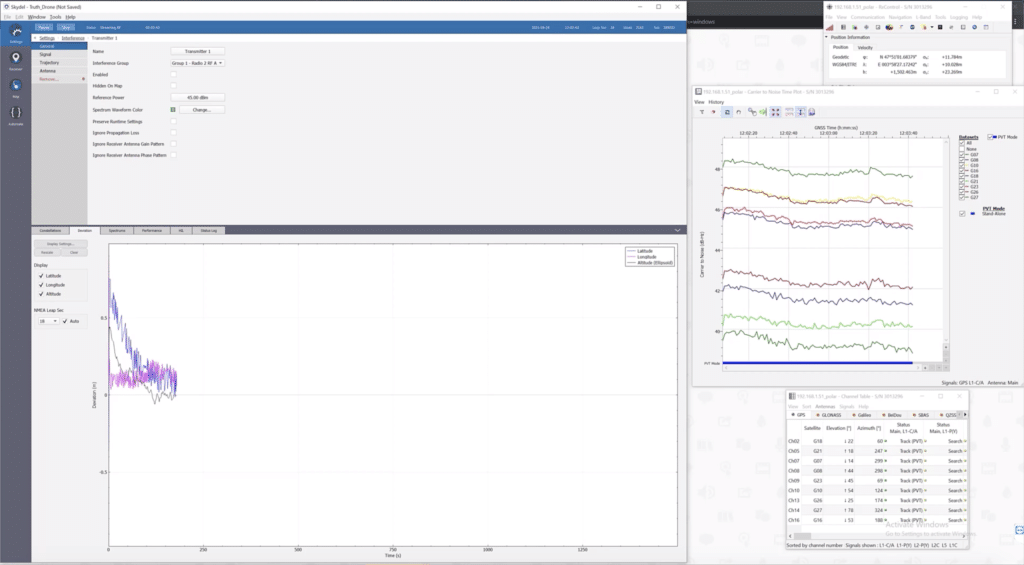
Enhancing Resilience: The Vital Role of GNSS Simulators in Testing of Autonomous Systems against Jamming
Introduction
In the realm of military operations, autonomous systems have emerged as powerful tools, revolutionizing warfare tactics and capabilities. However, their effectiveness can be compromised by the threat of Global Navigation Satellite System (GNSS) and GPS jamming and spoofing. To ensure the resilience of autonomous systems against such attacks, the use of GNSS simulators becomes crucial. This article delves into the significance of GNSS and GPS simulators in testing the resilience of autonomous systems against external interference, emphasizing the importance of robustness and readiness in both civilian and defense operations.
Realistic Scenario Replication
GNSS simulators, such as the Skydel-powered GSG-7 or GSG-8, provide the capability to replicate realistic jamming and spoofing scenarios encountered in military and non-combat environments. By digitally replicating jamming and/or spoofing signals, simulators enable thorough evaluation of autonomous systems’ responses under various conditions, ranging from partial degradation to complete signal loss and/or deception. This realistic simulation aids in identifying vulnerabilities and assessing the system’s ability to adapt and withstand hostile jamming and spoofing tactics that can affect a vehicle or aircraft’s navigation, timing, and positioning.

Comprehensive Resilience Testing
GNSS simulators can greatly facilitate comprehensive testing of autonomous systems (and subsystems) against a large range of interference techniques. Skydel-based GNSS simulators, for example, are able to manipulate signal strength, frequency, and timing, thus emulating the sophisticated jamming and spoofing methods employed by adversaries or bad actors. The ability to simulate this type of interference – with a device under test in a hardware-in-the-loop configuration, for example – allows engineers to gauge the system’s resilience, refine countermeasures, and ensure uninterrupted operation even in the face of deliberate attacks.
Risk Mitigation and Mission Success
Through rigorous testing, GNSS simulators can discover and mitigate potential vulnerabilities in autonomous systems before they impact critical missions. This proactive approach permits designers, engineers, and manufacturers to improve the robustness of their system, thus ensuring mission success, safeguarding military personnel, and maintaining a tactical advantage on the battlefield.
Regulatory Compliance and Interoperability
Compliance with regulatory standards and interoperability with coalition partners are paramount in military operations. GNSS simulators play a vital role in meeting these requirements by testing the resilience of autonomous systems against jamming.

Multipath Simulation
Simulating multipath GNSS signals is also an essential aspect of testing the resilience of navigation or autonomous systems. Multipath refers to the phenomenon where GNSS signals reflect off surfaces, (in an urban canyon, for example) causing delayed and distorted signals at the receiver. This can lead to inaccurate position and timing information, jeopardizing the effectiveness of a vehicle or aircraft’s navigation system. By incorporating multipath simulation in GNSS simulators like Skydel, engineers can evaluate the system’s ability to mitigate the adverse effects of multipath, such as employing advanced signal processing techniques and updating antenna design. Accurate simulation of multipath scenarios enhances the reliability and precision of navigation systems, ensuring their effectiveness in demanding operational environments.
Conclusion
GNSS and GPS simulators – like the Skydel-powered GSG-7 and GSG-8 – serve as indispensable tools in fortifying the resilience of autonomous navigation systems against GNSS jamming and spoofing threats and multipath signal occurrences. The Skydel simulation engine is equipped to accurately replicate realistic scenarios, facilitate comprehensive testing, and mitigate risks, thereby empowering engineers to develop robust, reliable, and resilient systems.
The use of GNSS simulators enhances the capabilities of these systems, contributing to the effectiveness, security, and success of military operations in an increasingly complex, challenging, and dangerous world.


